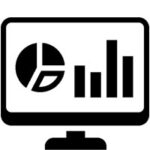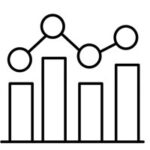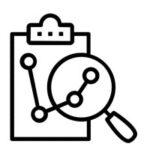Business Analysis
We affirm Business analytics (BA) is the combination of skills, technologies, and practices used to examine an organization's data and performance as a way to gain insights and make data-driven decisions in the future using statistical analysis.
Out pathway to establish complete Data Analysis include:
Our enhanced Business Analytics help the organizations to:
Have Significant Customer Service
To ensure businesses can retain their customer base, they turn to analytics. For example, companies can analyze a customers interaction on their website and past purchasing habits. Based on this data, they can analyze patterns and make improvements to their website performance.
Have More Accurate Decision Making
Businesses often outsource a few of their processes to enhance their efficiency. When it comes to selecting vendors for such activities, they need to know which one will bring more profits. Analytics can help them evaluate supplier performance based on customer ratings, order fulfilment speed, quality, etc. This data will help them decide which one works best for their business.
Minimal Employee Turnover
Every year, companies have to bear an extensive cost due to employee onboarding and attrition. To save time and costs, HR professionals can use analytics tools to examine the likelihood of an employee aligning with a company’s culture, tracking their performance and how satisfied they are with the new role, and similar factors. Once you know such answers, it will be easier to recognize employees who will stick to your company for a long time.
Amplify Operational Efficiency
Efficiency is not always limited to employees. Businesses can also analyze other resources to learn more about their performance. For example, a grocery store chain was able to reduce refrigeration costs by merely analyzing the temperatures of in-store coolers.
Identify Duplicity
Finance companies have begun using analytics to reduce fraud. One way they do this is by using data to identify potentially fraudulent purchases, based on the analysis of customer’s previous transactions. This helps rate the risk that a particular customer presents and use this analysis to prevent losses, and builds stronger customer relationships.
Have Greater Revenue
Companies that embrace data and analytics initiatives can experience significant financial returns. The collection and analysis of data, no matter how it takes shape, can help businesses achieve their goals specifically growing revenue
Our Process of Business Analytics include:
Discovering the Business Need
The first stage in the business analytics process involves understanding what the business would like to improve on or the problem it wants solved. Sometimes, the goal is broken down into smaller goals. Relevant data needed to solve these business goals are decided upon by the business stakeholders, business users with the domain knowledge and the business analyst.
Gathering the Data
This stage involves cleaning the data, making computations for missing data, removing outliers, and transforming combinations of variables to form new variables. Time series graphs are plotted as they are able to indicate any patterns or outliers. Once the data has been cleaned, the analyst will try to make better sense of the data. The analyst will plot the data using scatter plots (to identify possible correlation or non-linearity).
Analyzing the Data
At this stage, using statistical analysis methods such as correlation analysis and hypothesis testing, the analyst will find all factors that are related to the target variable. The analyst will also perform simple regression analysis to see whether simple predictions can be made.
Forecast the Consequences
Business analytics is about being proactive in decision making. At this stage, the analyst will model the data using predictive techniques that include decision trees, neural networks and logistic regression. These techniques will uncover insights and patterns that highlight relationships and ‘hidden evidences’ of the most influential variables.
Find an Ideal Solution
At this stage the analyst will apply the predictive model coefficients and outcomes to run ‘what-if’ scenarios, using targets set by managers to determine the best solution, with the given constraints and limitations. The analyst will select the optimal solution and model based on the lowest error, management targets and his intuitive recognition of the model coefficients that are most aligned to the organization’s strategic goal.
Fabricate a proper Resolution
The analyst will then make decisions and take action based on the derived insights from the model and the organizational goals. An appropriate period of time after this action has been taken, the outcome of the action is then measured.
We believe in using the below as best tools for BA

Analytical Software

Statistical Tools

Predictive Modelling

